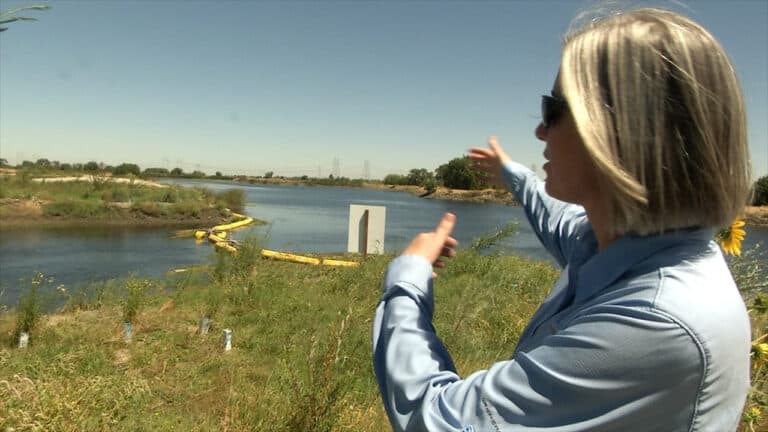SAN FRANCISCO (KGO) — When we first visited Dutch Slough in eastern Contra Costa County last year, the recently restored tidal marsh was already flourishing. But hiding among the reeds was a critical question. How effective would the marsh be at sequestering carbon? A key benefit of restoring wetlands in the age of climate change.
“For doing the inhaling and exhaling, and we’re trying to inhale more carbon dioxide and then exhaling oxygen that we need,” explains University of California biometeorology professor Dennis Baldocchi, Ph.D.
Prof. Baldocchi’s team placed sensitive instruments in the slough to measure greenhouse gases and other data in multiple ways. He says the results after more than a year of monitoring show that the tidal marsh is acting as a powerful carbon sink, drawing CO2 into the ground where it should remain sequestered, instead of contributing to climate change.
“I’d say we’re probably in the one percentile, upper one percentile of the ecosystems in the world that have the largest amounts of carbon dioxide taken up over a year,” says Baldocchi.
And to compare that benefit, Karen Thorne, Ph.D., and her team from the United States Geological Survey helped take additional measurements. Discovering that while the surrounding farmland is still emitting greenhouse gasses, the new tidal marsh is sequestering CO2 at an even faster rate.
“Our early results are telling us that the Dutch Slough restoration is really pulling in carbon dioxide from the atmosphere 10 times faster than the pasture lands,” says Thorne.
While Dutch Slough is clearly a success story, it didn’t happen overnight. And the work that went into it, could hold lessons for other […]
Full article: Bay Area Dutch Slough tidal restoration project creates powerful carbon sink, combats climate change

